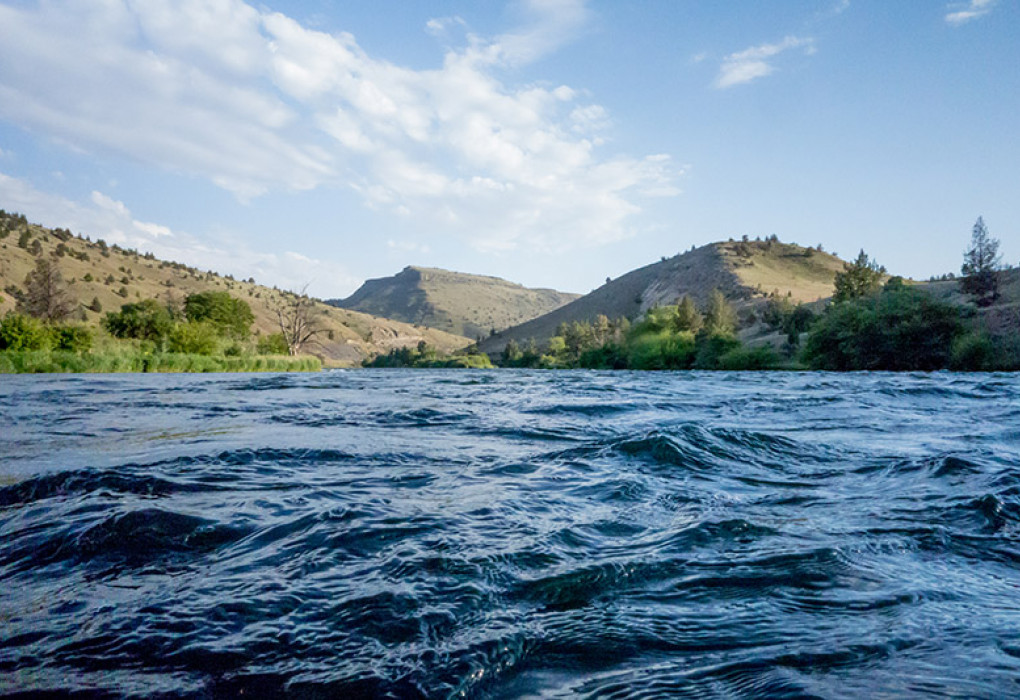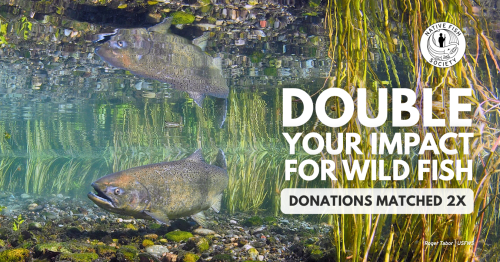Protect the Magic: Moving Forward on the Deschutes River
The Native Fish Society and our River Stewards have been advocating for the Deschutes River and its wild, native fish for over a decade. In 2016, we redoubled our efforts, intent on holding Portland General Electric (PGE) to the promises it made in exchange for the 2005-relicensing of the Pelton Round Butte Complex: improved water quality and healthier populations of native fish. The long-term stewardship of the Deschutes River and its native fish is among our highest purposes as an organization. Below you’ll find comments on the ups and downs on the Deschutes in 2016, as well as notes from our plan moving forward.
Wild Fish Don’t Ride in Trucks
Based on both personal experience and the best available science, we are opposed to non-volitional fish passage, like PGE’s trap-and-haul program. When fish are driven around a dam in the back of a repurposed septic truck, they are no longer self-sustaining; a fundamental component of recovery according to the Endangered Species Act.
Lucky Misses the Mark
PGE agreed to mark 100 percent of young salmon and steelhead that pass through the fish-collection station at the selective water withdrawal tower on Lake Billy Chinook. This is a significant improvement in the reintroduction plan. With a clipped maxillary, anadromous fish that originated above the dam will be easily distinguished, preventing delayed passage upstream and the spread of non-native diseases.
In 2016, a record 535 sockeye returned to the trap at the base of Pelton Dam. They had not been marked during their outmigration in 2014 and biologists couldn’t determine whether they were returning salmon from above the dams, or strays from another Columbia River tributary. After holding the fish for nearly a month with no progress toward determining their origin, the decision was made to send the majority of them upstream. Genetic analysis later determined that 94 percent of those sockeye did, in fact, originate above the dams, but good luck can run out quickly. A clipped maxillary is a simple solution that will take luck out of the process.
How Warm & How Dirty?
After six years of seemingly warmer and dirtier water in the lower Deschutes, we’re optimistic that the Fish Committee will have the data needed to assess and improve water quality in 2017. PGE is finishing its Macroinvertebrate & Periphyton and Deschutes River Water Quality studies. The Deschutes River Alliance (DRA) is publishing their own water quality data gathered last year from Lake Billy Chinook, its tributaries, and the lower Deschutes. Moreover, a Clean Water Act lawsuit brought by the DRA has increased pressure to provide a more thorough analysis. It has been an agonizing wait for more information, but we will not recommend specific changes without data.
The data and modeling developed for PGE’s Deschutes River Water Quality Study, which should be available in early 2018, will help members of the Fish Committee understand what effect cold water reserves in Lake Billy Chinook could have on the lower Deschutes. After lethal water temperatures resulted in massive fish kills in the Columbia River in 2015, we urged the Fish Committee to consider emergency releases of cold water to provide a refuge for salmon and steelhead. A protocol for emergency cold-water releases could be in effect as early as the summer of 2018.
To keep our members informed, NFS River Stewards are compiling all of the recent reports on fish health and water quality as soon as they are available. On our website, the watershed page for the lower Deschutes will become a clearinghouse for this information.
Never Ending Reintroduction
Since 2007, 8.4 million hatchery chinook and steelhead fry have been released into Lake Billy Chinook’s tributaries with the intent of jumpstarting the reintroduction effort. Worse, the Fish Committee can’t say when they plan to stop. It seems there is no consensus on how many steelhead and chinook must return to the upper river before the committee considers the population self-sustaining and hatchery programs can be shut down. Left unchecked, the committee’s open-ended timeline is poised to create a negative feedback loop that could ultimately undermine the end goal of the reintroduction: locally adapted, self-sustaining runs. In 2017, NFS will work with members of the Fish Committee to establish clear objectives and hard timelines.
Equally concerning is the potential expansion of hatchery programs on the Deschutes. A few members of the Fish Committee have expressed interest in introducing hatchery sockeye to aid the reintroduction effort. This is not only unnecessary, it would be counterproductive. Because they evolved to rear in lakes, Deschutes-river sockeye may be the fish best-suited for reintroduction above the dams. The base of the record return of sockeye in 2016, for example, was a naturally spawning population from the Metolius River.
Hatchery steelhead smolts are also a threat to wild rainbow trout above the dam. A joint study, conducted in 2015 by the United States Fish and Wildlife Service and the U.S. Forest Service, concluded that, “Round Butte hatchery rainbow trout and steelhead have predominantly displaced natural origin rainbow trout from Whychus Creek in the past two generations.” Native Fish Society asked PGE to stop planting hatchery steelhead fry until they could ensure native fish were protected. While PGE and ODFW refused to stop hatchery steelhead plants altogether, they have significantly reduced the number destined for the Crooked in 2017. Acknowledging the potential of this problem, PGE and ODFW are conducting a study on rainbow trout in Whychus, Ochoco and McKay creeks. Results will be available in 2017.
Proceed With Caution
Thank you to our members and Rivers Stewards for your unwavering support. In hard times, we draw inspiration from the spirited words of former Oregon Governor Tom McCall: “Let’s proceed with great caution. Let’s be on the side of native fish and the river, and the solitude of those tremendous canyons......and the sound of rushing water.” We look forward to working with everyone who cares about the Deschutes to ensure the magic of the river is passed on to future generations.


